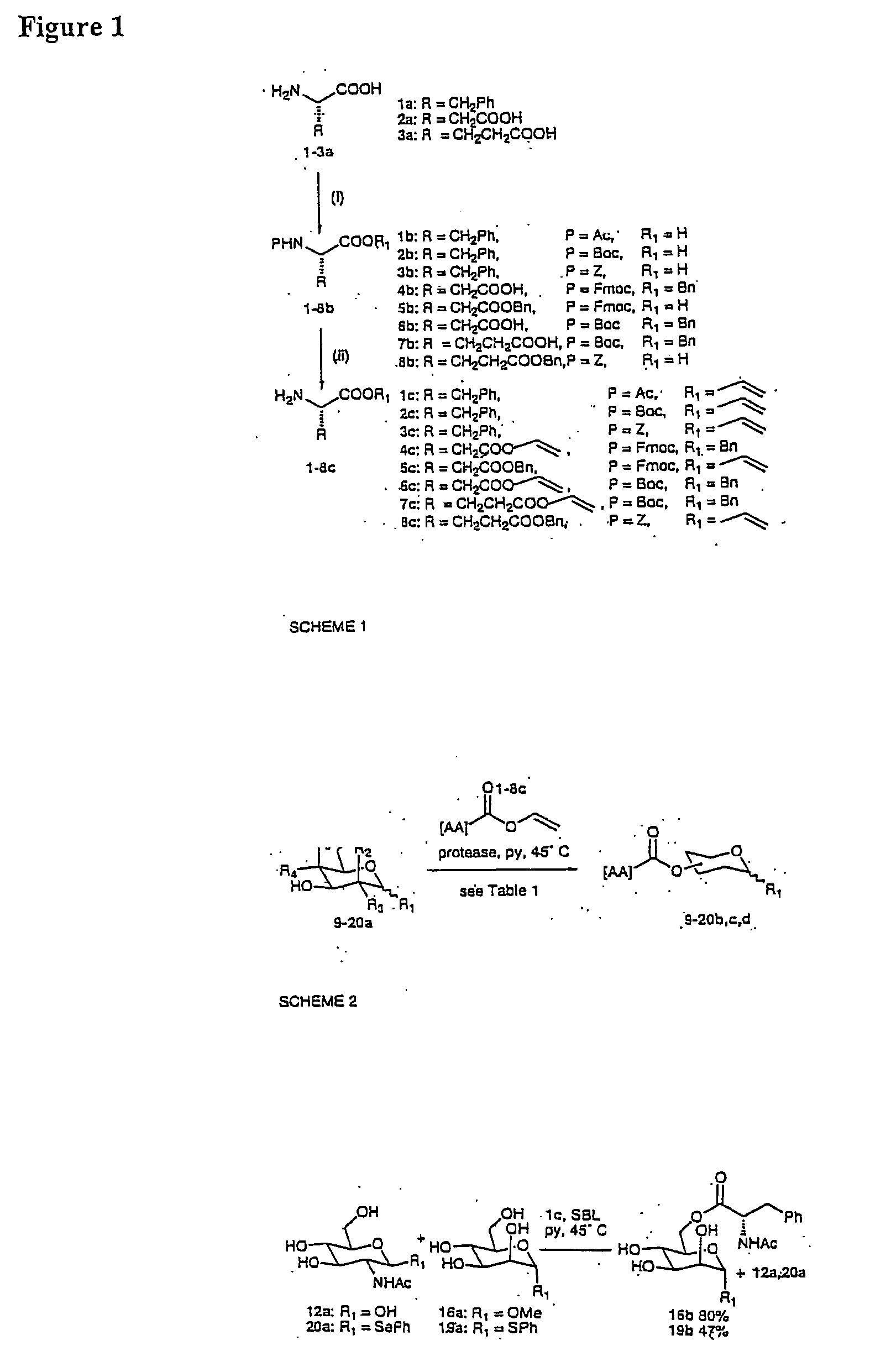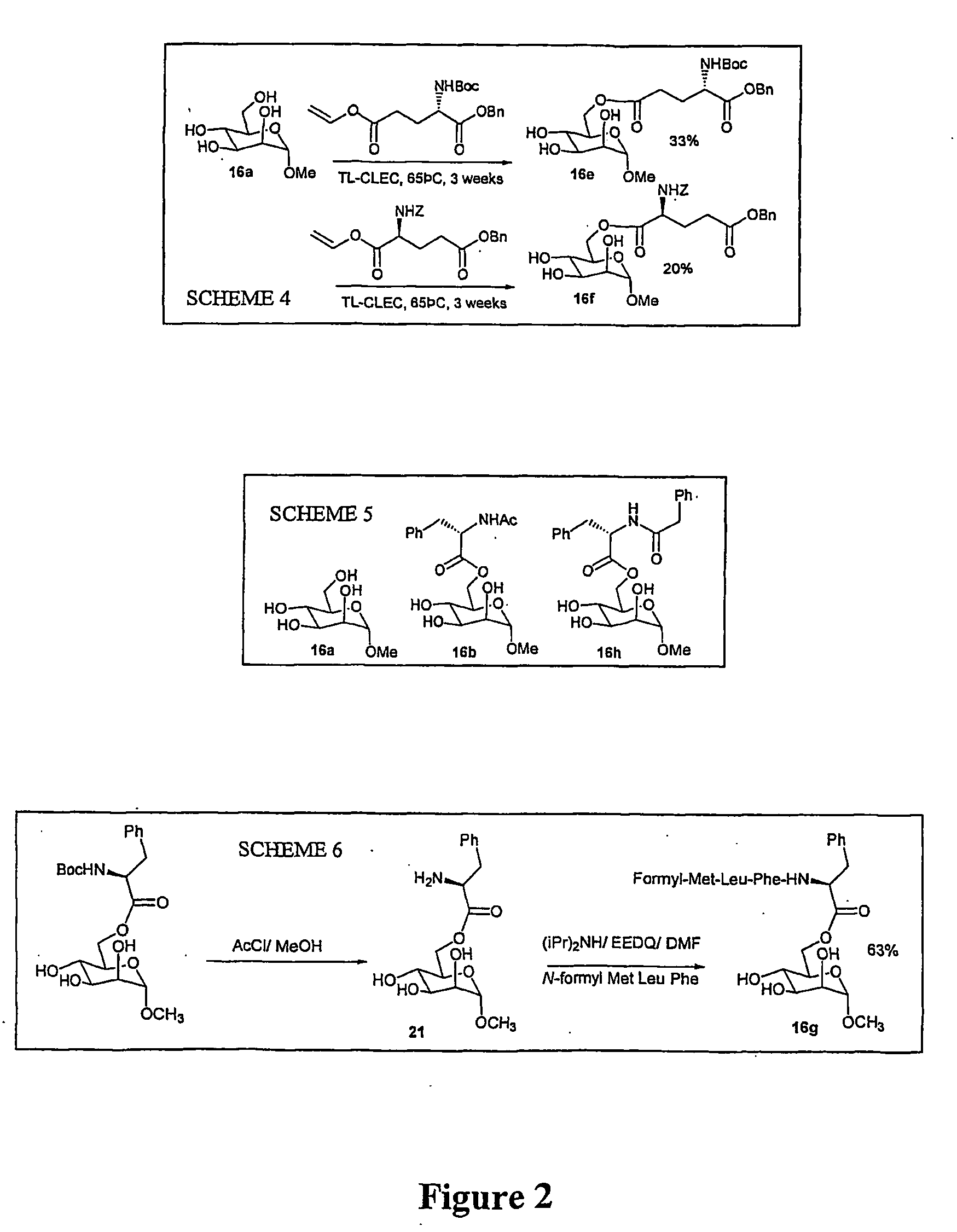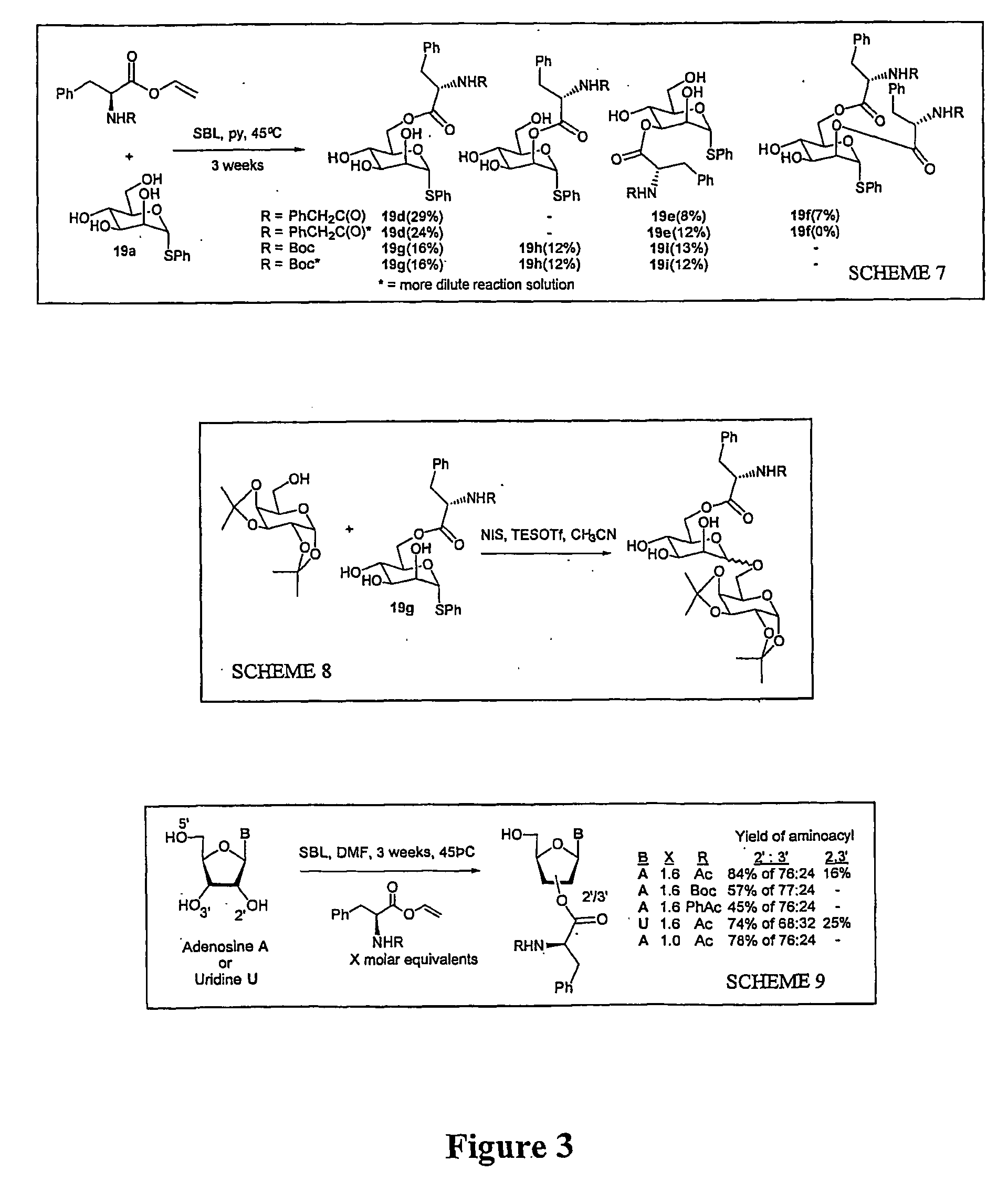Method for preparing ester linked peptide-carbohydrate conjugates
a technology of ester linked peptides and conjugates, which is applied in the field of method for preparing ester linked peptidecarbohydrate conjugates, can solve problems such as extensive protection regimes
- Summary
- Abstract
- Description
- Claims
- Application Information
AI Technical Summary
Benefits of technology
Problems solved by technology
Method used
Image
Examples
example 2
EXAMPLE 2A
Construction of Pyranoside-Peptide Conjugates
[0094] In our project, we were interested in the use of proteases as typically robust and flexible enzymes. For example, in 1988, Klibanov (Riva et al (1988) described the use of Bacillus subtilis protease (subtilisin). This commercial enzyme was stable and active in numerous anhydrous organic solvents (pyridine, DMF), which were needed to dissolve the free sugars. We have chosen to use the Subtilisin of Bacillus lentus (SBL) to perform many of our enzymatic acylations. In 1998, Jones (Lloyd et al (1998)) described the use of this enzyme; it was shown that this enzyme was very useful in the catalysis of transesterifications between vinyl esters and different alcohols in good to excellent yields.
[0095] The effect of varying the amino acid acyl donor was investigated. Consistent with the observed low affinity of SBL for other amino acid esters (Khumtaveepom (1999)), none of the aspartate or glutamate acyl donors were readily accep...
example 2b
Generation of Nucleoside-Peptide Conjugates:
[0100] The powerful selectivity observed for pyranoside-peptide conjugation prompted us to investigate the use of SBL protease in furanoside, and in particular, riboside and ribonucleoside-peptide formation. We reasoned that, in particular, this may have utility in the formation of the CCA-peptide moiety of aminoacyl-tRNAs. The synthesis of these structures is complicated by the presence on the 2 / 3' terminal hydroxyl groups of an amino acid-ester linkage, which renders them inaccessible by normal automated nucleic acid synthesis techniques.
[0101] Standard chemical methods or the use of other enzyme systems in riboside acylation gives 5'-O-acyl derivatives of no utility in acyl-tRNA synthesis. Indeed, in the literature, few examples of regioselective aminoacylation of nucleosides have been achieved. These have used standard chemical methods employing activated amino acids in pyridine (Oliver et al (1996)) or the Mitsunobu reaction (Montero ...
example 2c
The Use of Regioselective Acylation to Construct Peptide-Bridged Carbohydrates of Potential Use in Tethered Oligosaccharide Synthesis:
[0109] To survey other potential enzyme systems a screen of 28 acyltransferases for their ability to perform esterfications and their robustness to organic solvents was carried out and confirmed that the use of SBL and TL-CLEC give the highest yielding results in peptide-carbohydrate ester formation strategies. With this information in hand two templated glycosylation strategies were devised:
[0110] (i) link donor and acceptor carbohydrate via enzyme-catalyzed ester formation to a pre-formed peptide based template. Selectivity was obtained by having a L-phenylalaninyl moiety at one terminus of the template (for recognition by one enzyme (e.g. SBL) and an orthogonal (to be recognised by another enzyme e.g. TL-CLEC) vinyl ester moiety at the other; and
[0111] (ii) to tether C-6 linlced glycoamino acid esters obtained from the method of Example 2A above to...
PUM
| Property | Measurement | Unit |
|---|---|---|
| Temperature | aaaaa | aaaaa |
| Temperature | aaaaa | aaaaa |
| Volume | aaaaa | aaaaa |
Abstract
Description
Claims
Application Information
 Login to View More
Login to View More - R&D
- Intellectual Property
- Life Sciences
- Materials
- Tech Scout
- Unparalleled Data Quality
- Higher Quality Content
- 60% Fewer Hallucinations
Browse by: Latest US Patents, China's latest patents, Technical Efficacy Thesaurus, Application Domain, Technology Topic, Popular Technical Reports.
© 2025 PatSnap. All rights reserved.Legal|Privacy policy|Modern Slavery Act Transparency Statement|Sitemap|About US| Contact US: help@patsnap.com



